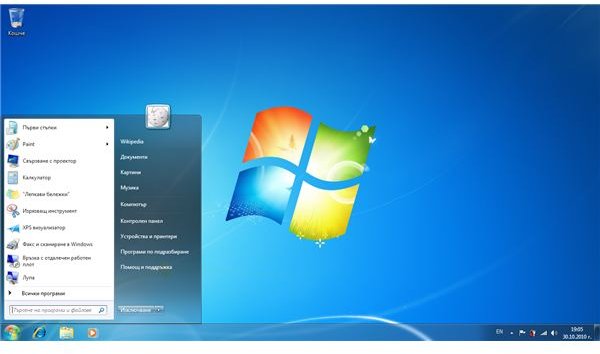Upgrade 32 Bit WIndows 7 to 64 Bit in These Not-So-Easy Steps
Changing from 32 Bit to 64 Bit Windows 7
To upgrade Windows 7 32 bit to 64 bit, complex action is required. However, this will allow them to take advantage of the 64 bit processors inside their computers and run 64 bit Windows applications such as Adobe Creative Suite to gain performance and productivity advantages. It would also allow you to install more RAM in your PC.
Unfortunately, most would-be upgrade candidates get stymied when they discover that the Windows 7 Upgrade only works when upgrading from Windows Vista 32 bit or reinstalling 32 bit Windows 7. Users should not be dismayed, however, because the change can still be made, only it’s more complicated than a typical upgrade.
Image Credit: Wikimedia Commons/Wiki-win-7
Getting Started
Before a computer user can use Windows 7 64 bit and 64 bit applications, users must have a computer that is capable of running the 64 bit version of Windows. This primarily has to do with the CPU that is installed. Users should also verify that the rest of the minimum system requirements for Windows 7 64 bit are met before attempting to upgrade or install the operating system.
The Standard Upgrade Doesn’t Work
An upgrade that preserves original files and programs will not be possible when attempting to upgrade Windows 7 32 bit to the 64 bit version of Windows 7. The same is true for upgrading Windows Vista. Users who do not mind losing some of their programs and files can proceed with a standard installation as long as they understand that their current configuration will be overwritten and erased.
Users wishing to change from a 64 bit version of Windows to a 32 bit version will encounter a similar problem.
Two Easy Steps
The first step in the 32 bit Windows 7 to 64 bit transition is to backup the files that are currently on the system hard drive. When this is done, users can boot the computer using the 64 bit installation disk and then choose the “Custom” option from the installation menu. Because the installation was started in the “Custom” mode, users will have the opportunity to restore their files and programs during the installation process.
The Microsoft utility that transfers the files from the backup to the new installation, Windows Easy Transfer, will only work when transferring files from a 32 bit installation to a 64 bit installation or when transferring between two 32 bit installations or between two 64 bit Windows installation. When transferring from a 64 bit installation to a 32 bit installation, users must manually backup their files.
Although this sounds easy, users should aware that the process of backing up and restoring their files can make the Windows 7 64 bit custom installation take much longer than an ordinary installation.
Additional Resources
Windows users wishing to make the 32 Bit Windows 7 to 64 Bit transition should review Microsoft’s instructions for installing and re-installing Windows 7 for guidance. Be sure to review the notes about running the Windows 7 custom installation.
References
Microsoft. “Installing and reinstalling Windows 7”, https://windows.microsoft.com/en-US/windows7/Installing-and-reinstalling-Windows-7
